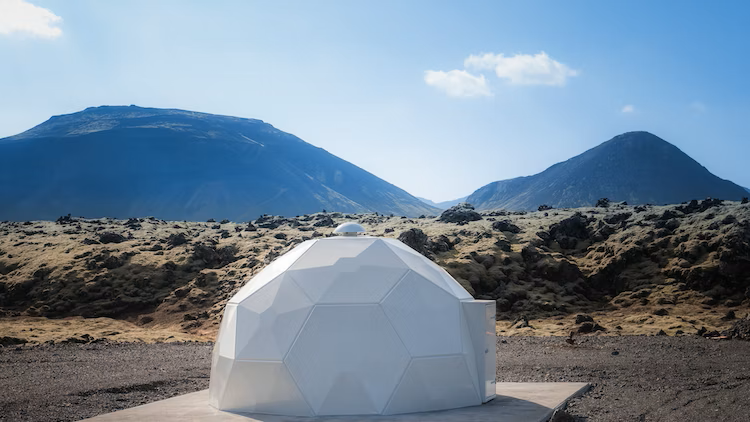您想继续阅读英文文章还
是切换到中文?
是切换到中文?

THINK ALUMINIUM THINK AL CIRCLE

In the remote backdrop of Iceland's Hellisheidi geothermal power plant, Olafur Teitur Jonsson is unveiling a groundbreaking method for storing CO2 emissions, and the world is taking notice.

Inside a small geodesic dome owned by the Icelandic startup Carbfix, CO2 from the nearby power plant is blended with groundwater and then injected into the volcanic basalt rock beneath.
What makes Carbfix's approach remarkable is its efficiency. Over nine years, nearly 95 per cent of the CO2 pumped into the power station has transformed into solid rock within just two years. This acceleration of the natural CO2 mineralisation process, facilitated by water as a carrier, is revolutionary.
While nature typically takes thousands of years to achieve this, Carbfix accomplishes it in two years, all while eliminating the need for constant monitoring to prevent CO2 leaks. Additionally, it dissociates CO2 storage from its controversial association with the oil and gas industry, setting a new standard for climate action.
The prominence of Carbfix's innovative technology is evident, with their geodesic dome gracing the cover of the latest National Geographic issue. Renowned figures like Canada’s Prime Minister Justin Trudeau, Paris Mayor Anne Hidalgo, and a delegation of U.S. senators have all visited Carbfix's site, highlighting the global significance of their accomplishments.
A gathering of 120 prominent international figures in Iceland for Carbfix’s mineralisation summit further endorsed the substantial potential of subsurface CO2 mineralisation as a secure and enduring method for storing captured CO2.
Unlike traditional carbon capture and storage (CCS) methods, which often involve injecting captured CO2 into depleted onshore oil and gas fields for enhanced oil recovery, Carbfix's approach is unique. They don't merely store CO2; they sequester it as a mineral. This method has a smaller land footprint and can be conveniently located near other industries, offering versatility and environmental benefits.
Some of the CO2 doesn't have to travel far, as the initial stage of the Coda project is being established on land owned by Rio Tinto, exploring methods to capture CO2 emissions from its aluminium plant situated on the same site.
The collaboration between Carbfix and Swiss startup Climeworks is another significant milestone in their journey. Climeworks, in 2021, established the world's first direct air capture (DAC) plant, capable of capturing 4,000 metric tonnes of CO2 annually. Their partnership, dating back to 2017, aims to pioneer DAC technology. Carbfix has also recently partnered with Carbfix’s direct competitor, Norway’s Removr, both of which are part of the Ankeron consortium.
Carbfix's most ambitious endeavour is building the Coda Terminal, a cross-border CO2 storage and transport facility. This project received a substantial grant from the EU Innovation Fund, and when fully operational in 2031, it will mineralise 3 million tonnes of CO2. The unique aspect of this project is that it is located on land, using shallower wells and lower pressures, unlike other European CCS projects that are supercritical offshore.
Dr. Edda Sif Aradottir, Carbfix's chief executive, emphasizes the importance of broadening access to carbon removal efforts rather than monopolizing them. Although DAC is an essential part of Carbfix's business model, its primary focus is on the growing CCS market to prevent CO2 emissions from entering the atmosphere in the first place, particularly in challenging sectors like cement, steel, and power plants. These industries need help in reducing emissions.
The magnitude of the challenge ahead is staggering. To limit global temperature rises to 1.5 degrees Celsius by 2050, the International Energy Agency indicates that enormous volumes of CO2 must be captured and stored from industrial and power plants globally. However, the reality is that the technology still needs to meet these demands, capturing just 0.1 per cent of global emissions despite substantial investments over the last three decades.
Carbfix's journey may be long and ambitious, but its mission is clear – to sequester and mineralise as many tonnes of CO2 as possible for the sake of the environment and the climate.
Responses








